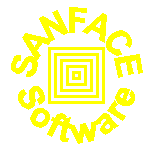
Georgia State University project
Historically, as each new semester would approach, Georgia State University would print 40,000 copies of its "Schedule of Classes". This process included choosing a specific "cut off" date when we would run a batch job against our legacy IDMS database on an MVS system. The batch job would produce a "Schedule of Classes" report that would be printed on a Xerox 4850 channel attached printer. This resulting printed report was bundled with other material and sent to a print shop to be assembled into the actual printed document. This all had to occur two weeks prior to actual registration.
Unfortunately the printed "Schedule of Classes" was simply a snapshot of the course offerings at THAT one moment in time, two weeks PRIOR to the actual start of registration. During the actual registration process additional classes are often added and sometimes removed, locations are changed, and times can change. This updated information is NOT reflected within the printed "Schedule Of Classes".
GSU's Information System & Technology department was asked if there was anyway to produce a PDF version of the "Schedule of Classes" directly from the information maintained within the legacy IDMS system. Having proved the feasibility two years earlier, we knew exactly what tool to try, txt2pdf PRO.
Over the course of one weekend, the basic structure of the build process was fleshed out. The original batch job was modified to write its output to a temporary file on the MVS system rather than directly to the Xerox printer spool. A cronjob was setup on a Solaris system to submit the modified batch job to the MVS system once an hour. The batch job results in a new course listing report. The course listing report is transferred from the MVS system to the Solaris system for eventual processing by txt2pdf PRO.
Unfortunately, the raw IDMS generated course listing report was created for use by a channel attached Xerox printer. The raw course listing report was constructed to take advantage of certain Xerox printer features such as multiple logical pages and font indexing. The course listing report also contains ANSI style carriage control characters (i.e. "1", " ", "+", "-", "0"), that had to be translated into their ASCII text file equivalents.
Because of the Xerox and ANSI print controls, the raw course listing report is first fed into a couple of quick and dirty Perl "filters" ("cookAnsiCourseListing", "resequenceSections") to convert the raw course listing file into a more useful "cooked" text file. This resulting "cooked" text file is what is fed into txt2pdf PRO. The resulting PDF file is copied over to a web directory where it is immediately available on the Internet.
It typically takes five to six minutes from the time the cronjob initiates the MVS batch job to moment the updated courses.pdf file is available on the web.
One feature of txt2pdf PRO that proved to be most amazing is the ability to produce a compressed PDF file. Our current course listing is typically around 100 pages. Without txt2pdf PRO's compression feature the PDF file was around 1,078 KB (1,078,000 bytes). With compression enabled, the resulting PDF file has shrunk to around 207 KB (207,000 bytes)!
By using txt2pdf PRO to produce a PDF version of our "Schedule of Classes", GSU has saved a considerable amount of money by not having to generate any printed versions, and has also increased the quality and timeliness of the data available to potential students by allowing for regular automatic updates of the courses.pdf to be published to the web.
Here you can download our last "Schedule of Classes".
Read the other projects